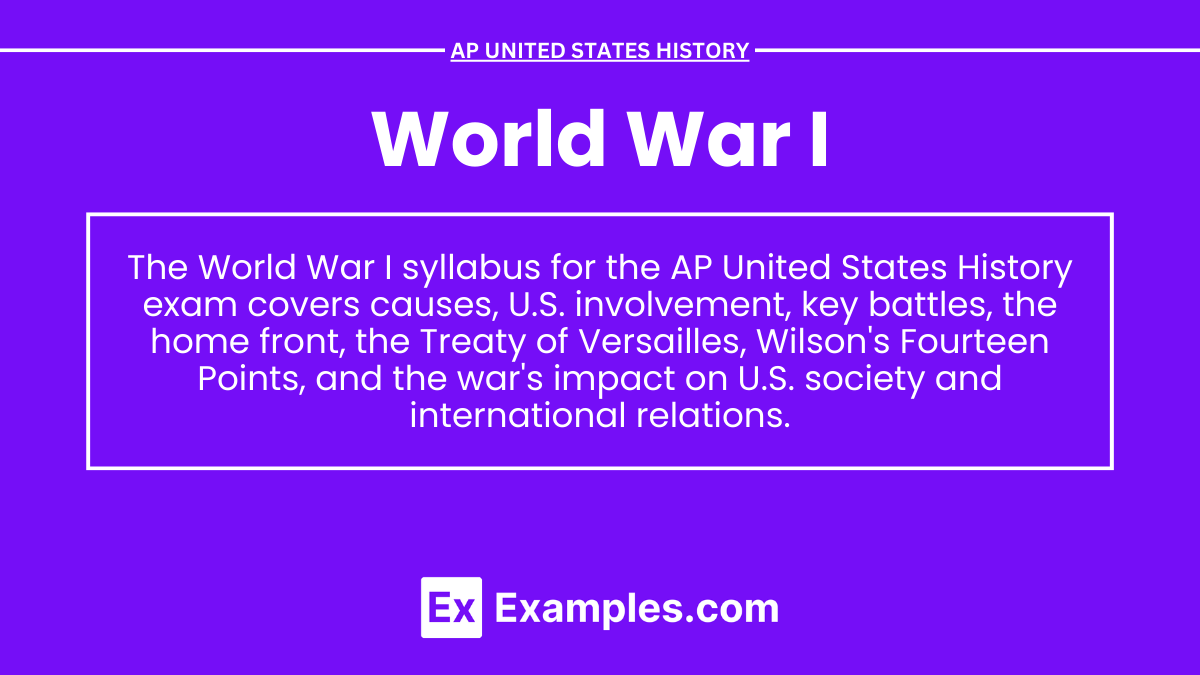In AP United States History, World War I is studied as a pivotal global conflict from 1914 to 1918 that reshaped the world order and marked the United States’ emergence as a significant world power. The war, triggered by the assassination of Archduke Franz Ferdinand and fueled by nationalism, militarism, imperialism, and complex alliances, saw unprecedented levels of destruction. The U.S. entered the war in 1917, playing a crucial role in the Allied victory, and the aftermath of the war led to significant political, social, and economic changes, both domestically and internationally.
Learning Objectives
The learning objectives for the topic “World War I” will include the ability to analyze the causes of the war, including nationalism, militarism, and alliances. You will be expected to evaluate the reasons for U.S. involvement in the conflict and the impact of American participation on the war’s outcome. Additionally, you will be required to assess the consequences of the war, including the Treaty of Versailles, the geopolitical changes in Europe, and the social and economic effects on the United States and the world.
Causes of World War I
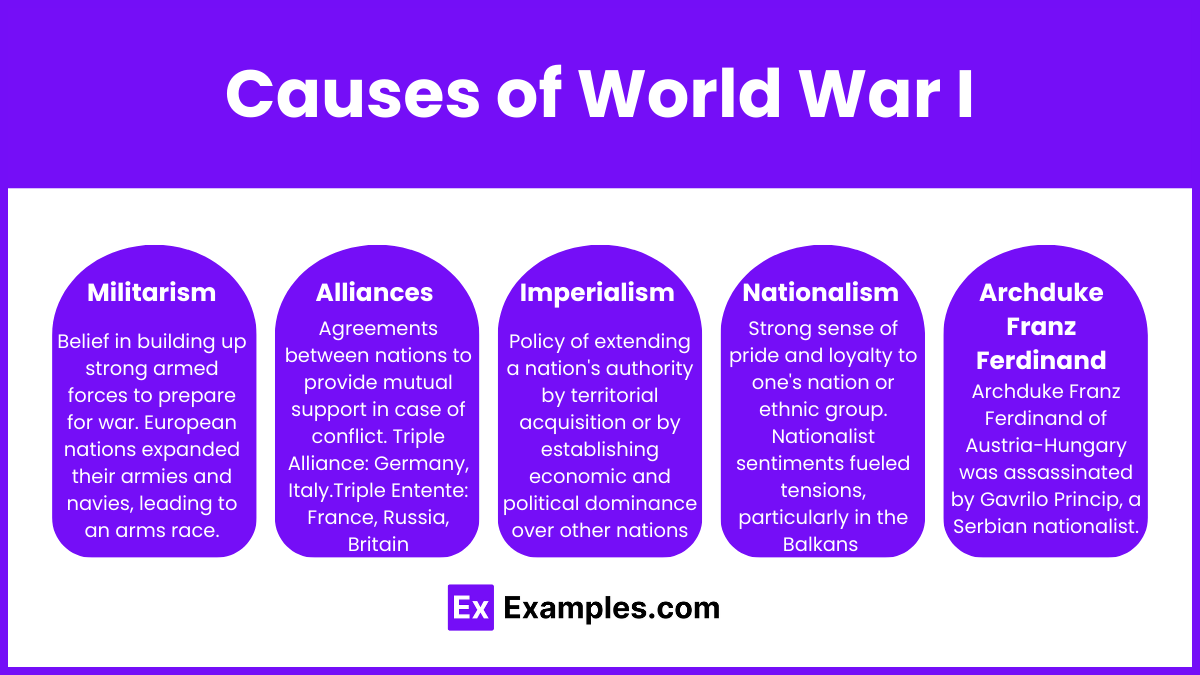
- Militarism: The arms race and the belief in strong military capabilities as a tool of national policy led to an increase in military spending and the buildup of large armies and navies.
- Alliances: European countries formed complex alliances to protect themselves, leading to a situation where a conflict involving one country could easily escalate to involve others.
- Imperialism: Competition for colonies and resources fueled tensions between major powers, particularly in Africa and Asia.
- Nationalism: Intense national pride and the desire for independence among various ethnic groups, especially in the Balkans, contributed to the instability in Europe.
- The Assassination of Archduke Franz Ferdinand: The immediate trigger for the war was the assassination of the Austrian Archduke in Sarajevo in 1914, which led Austria-Hungary to declare war on Serbia, drawing in their respective allies.
U.S. Involvement
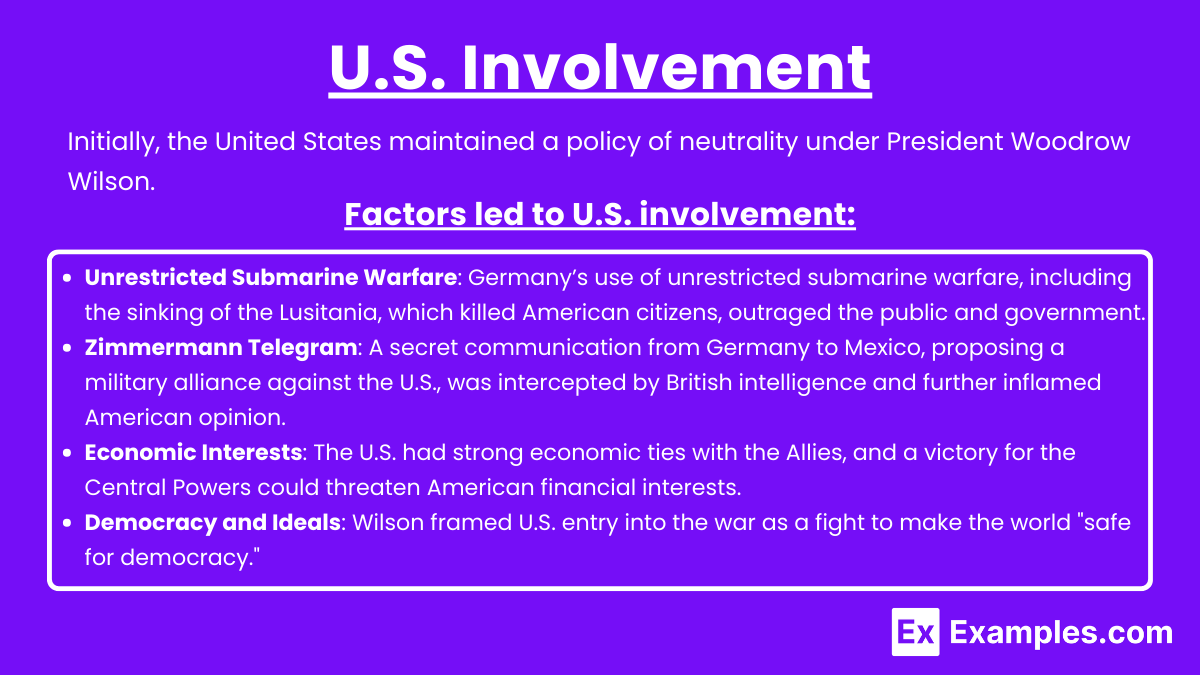
Initially, the United States maintained a policy of neutrality under President Woodrow Wilson. However, several factors led to U.S. involvement:
- Unrestricted Submarine Warfare: Germany’s use of unrestricted submarine warfare, including the sinking of the Lusitania, which killed American citizens, outraged the public and government.
- Zimmermann Telegram: A secret communication from Germany to Mexico, proposing a military alliance against the U.S., was intercepted by British intelligence and further inflamed American opinion.
- Economic Interests: The U.S. had strong economic ties with the Allies, and a victory for the Central Powers could threaten American financial interests.
- Democracy and Ideals: Wilson framed U.S. entry into the war as a fight to make the world “safe for democracy.”
Key Events and Battles
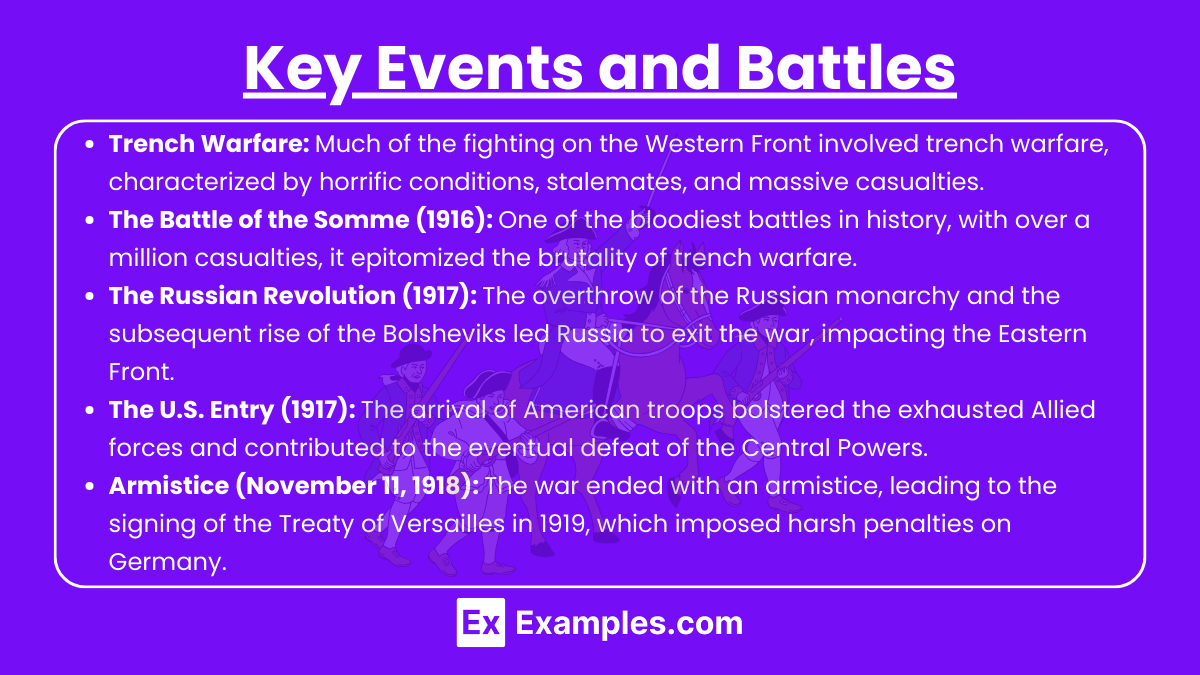
- Trench Warfare: Much of the fighting on the Western Front involved trench warfare, characterized by horrific conditions, stalemates, and massive casualties.
- The Battle of the Somme (1916): One of the bloodiest battles in history, with over a million casualties, it epitomized the brutality of trench warfare.
- The Russian Revolution (1917): The overthrow of the Russian monarchy and the subsequent rise of the Bolsheviks led Russia to exit the war, impacting the Eastern Front.
- The U.S. Entry (1917): The arrival of American troops bolstered the exhausted Allied forces and contributed to the eventual defeat of the Central Powers.
- Armistice (November 11, 1918): The war ended with an armistice, leading to the signing of the Treaty of Versailles in 1919, which imposed harsh penalties on Germany.
Consequences of World War I
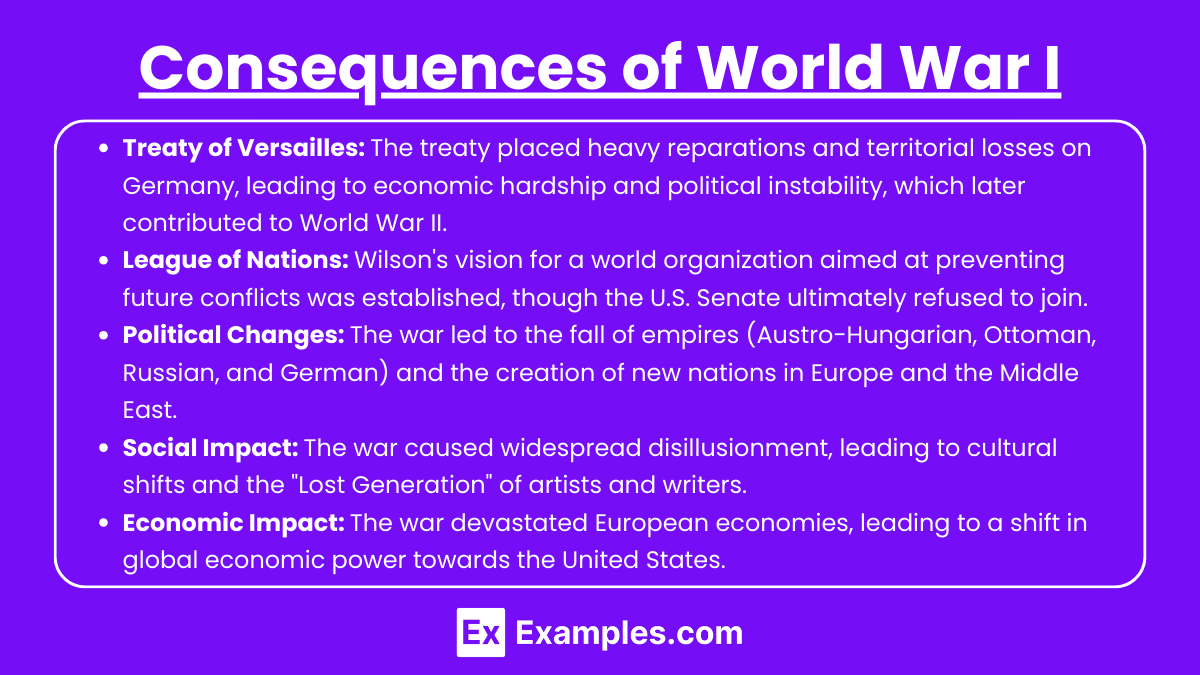
- Treaty of Versailles: The treaty placed heavy reparations and territorial losses on Germany, leading to economic hardship and political instability, which later contributed to World War II.
- League of Nations: Wilson’s vision for a world organization aimed at preventing future conflicts was established, though the U.S. Senate ultimately refused to join.
- Political Changes: The war led to the fall of empires (Austro-Hungarian, Ottoman, Russian, and German) and the creation of new nations in Europe and the Middle East.
- Social Impact: The war caused widespread disillusionment, leading to cultural shifts and the “Lost Generation” of artists and writers.
- Economic Impact: The war devastated European economies, leading to a shift in global economic power towards the United States.
Examples
- The Lusitania: The sinking of this British passenger ship by a German U-boat in 1915, killing 128 Americans, was a major factor in turning U.S. opinion against Germany.
- The Zimmermann Telegram: A key factor in U.S. entry into the war, this secret message from Germany to Mexico proposed an alliance against the U.S.
- The Selective Service Act (1917): Authorized the U.S. government to draft soldiers into the military, rapidly expanding the U.S. armed forces for the war effort.
- The Fourteen Points: President Wilson’s post-war plan, aimed at promoting peace and preventing future conflicts, influenced the formation of the League of Nations.
- The Treaty of Versailles (1919): The treaty that ended World War I imposed harsh penalties on Germany and redrew the map of Europe.
MCQs
- What event directly led to the outbreak of World War I?
- A) The signing of the Treaty of Versailles
- B) The assassination of Archduke Franz Ferdinand
- C) The sinking of the Lusitania
- D) The Russian Revolution
Answer: B) The assassination of Archduke Franz Ferdinand
Explanation: The assassination of the Austrian Archduke in 1914 triggered the events that led to World War I, as it set off a chain reaction of alliances and conflicts.
- Which factor contributed to the United States entering World War I in 1917?
- A) The signing of the Treaty of Versailles
- B) The formation of the League of Nations
- C) The Zimmermann Telegram
- D) The Russian Revolution
Answer: C) The Zimmermann Telegram
Explanation: The Zimmermann Telegram was a significant factor in the U.S. decision to enter the war, as it proposed a German-Mexican alliance against the United States.
- What was the primary goal of President Wilson’s Fourteen Points?
- A) To punish Germany for its role in the war
- B) To establish a framework for lasting peace and prevent future conflicts
- C) To create a new alliance system in Europe
- D) To expand U.S. territorial holdings
Answer: B) To establish a framework for lasting peace and prevent future conflicts
Explanation: Wilson’s Fourteen Points outlined his vision for a peaceful post-war world, including the establishment of the League of Nations to prevent future wars.

